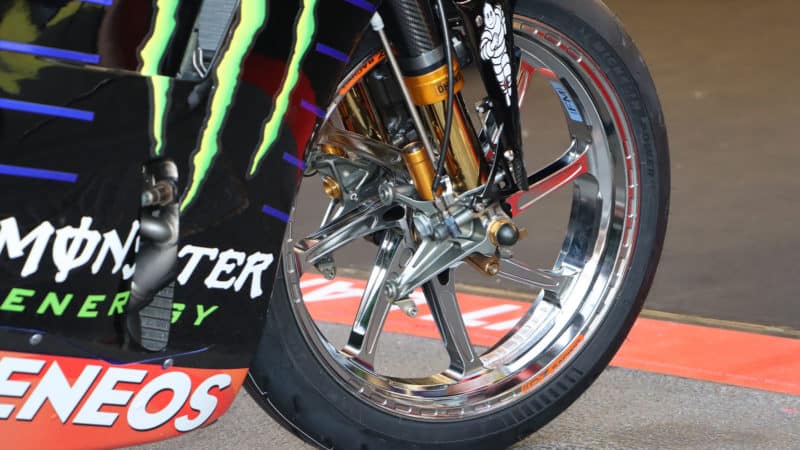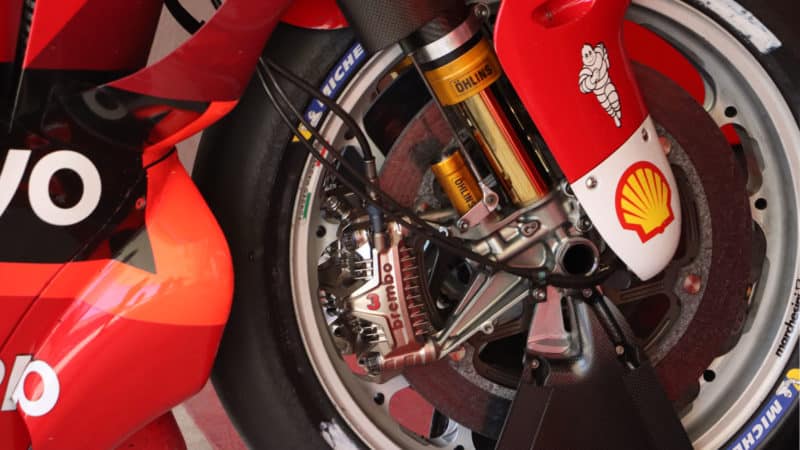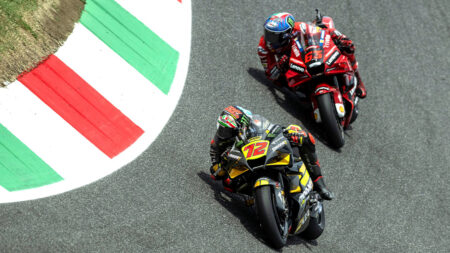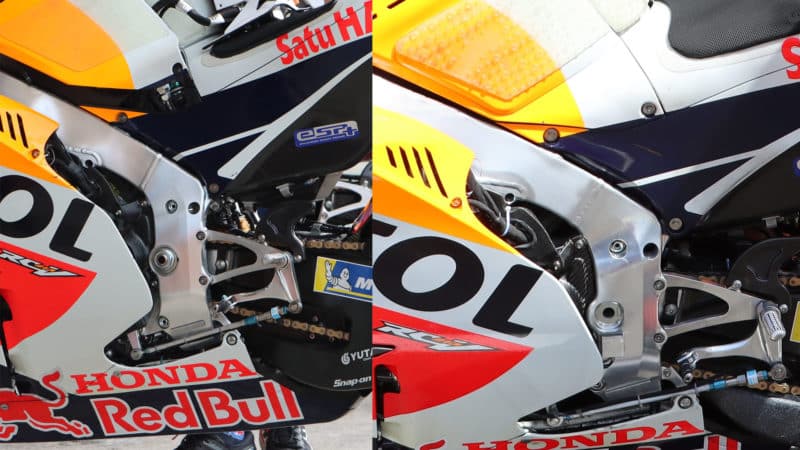“We want to give riders a bigger contact patch in the corners, which we can do with different stiffness solutions in our rim designs,” said Andrea Pellegrini of Marchesini, who equip Aprilia, Ducati, KTM and Suzuki.
“We have various different wheel specs – seven spoke and five spoke, with different weight and stiffness. We offer all our wheels to all our teams and each rider can choose which he wants, depending on his riding style and also the stiffness of his motorcycle’s chassis. For example, one rider may prefer a certain spec because he feels more grip in the corners. Also, rim stiffness can affect braking performance.”
OZ wheels recently introduced eight spoke wheels, which they say gives them better control of rim stiffness and heat transfer.
“It’s always a compromise between stiffness, weight and inertia, because if you have too much inertia, for example, the motorcycle will not turn so well,” said Giulio Argenziano of OZ, who supply all the Hondas and Yamahas on the MotoGP grid.
“All the riders have different ways to ride and different motorcycles, so all these parameters are very important. And you need to take a lot of care because things like heat transfer can affect rim stiffness.
“We have a long experience in this field from working in Formula 1. We even work in the wind tunnel to see how we can help riders reduce front tyre temperature and so on.”
OZ wheels feature tiny dimples in the rims which are one of the few tiny features actually visible without seeing the inside of the wheel.
“The dimples give a bit more surface area and better stiffness at the side of the rim, without increasing mass and therefore inertia,” added Argenziano. “It’s a small thing but if you put many small things together maybe you make a 10 per cent improvement in performance.”
MotoGP riders and engineers will face an even bigger front temperature challenge at August’s Austrian GP at Red Bull Ring, MotoGP’s most demanding circuit for braking systems. For the first time all riders must run Brembo’s 355mm carbon discs, instead of the 340mm discs used at most circuits.
These big discs are necessary because the motorcycles keep getting faster, but the larger rotors come very close to the rim, which will only exacerbate issues with rim and tyre temperatures.
KTM uses new aero, wants aero banned
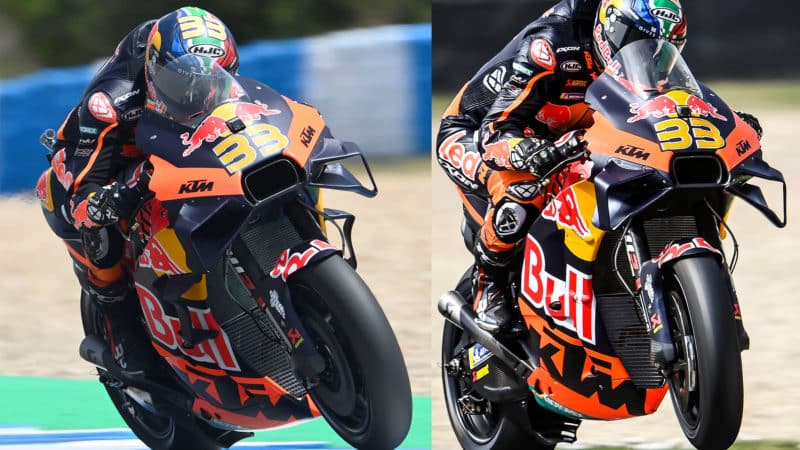
Spot the difference: Binder with old wings and sidepods at Jerez, then new wings at Mugello
Red Bull
KTM has a had a rough start to the 2022 MotoGP championship – just one dry-race podium, Brad Binder’s second place in the season-opening Qatar GP, and Miguel Oliveira’s victory in the rain-lashed Indonesian GP.
The RC16’s biggest change for 2022 was a radically different aero package – revised upper double wings and new, Ducati-style sidepods. The Austrian factory’s idea was that downforce aero had become so important in MotoGP that they must design the motorcycle around the aero, rather than treat the aero as an add-on.
But KTM’s aerodynamicists probably went too far in that direction, so at Mugello they introduced their second (and last, according to the rules) 2022 aero package.
“Before this year we tried to develop the aero package for a given bike setting,” said KTM MotoGP project leader Sebastian Risse at Mugello.
“This year we turned it around and basically set up the bike around the aero package – for sure it’s a more radical approach than previous years.

